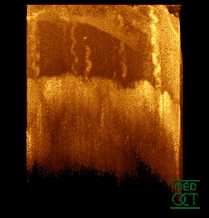NEW YORK - More television viewers are turning to the Internet to watch videos, films and TV episodes, according to a new survey.
In the past year, YouTube has widened its lead as the top destination for online videos, while search engines and television networks have gained ground.
Approximately 65 percent of the 2,455 U.S. adults surveyed by Harris Interactive said they have watched a video on YouTube, compared to 42 percent during the same time last year.
"Viewing videos online seems to inspire a sense of adventure, particularly among younger viewers," Joan Barten Kline, a spokeswoman for the company, said in a statement.
More than one-third of viewers overall and half of those 18 to 24 said there is something they really enjoy about discovering a cool video online.
"They seem to take particular pride in their finds online and share them with friends," Barten Kline added.
More than 42 percent of YouTube viewers said they visit the site frequently, up from 33 percent last year.
Apart from YouTube, which most people favored because they felt it had almost every video they could find, 43 percent said they have watched a video on a TV network Web site, followed by 35 percent on news sites and less than 30 percent on search engines such as Yahoo and Google.
Social networks such as MySpace and Facebook as well as music site iTunes also had a lower share of online viewers.
Online viewers said they would watch more TV episodes and full-length movies if more were available. There was less interest in viewing more amateur or user-generated videos, news and sports, according to the survey.
Copyright Reuters 2007. All rights reserved. Users may download and print extracts of content from this website for their own personal and non-commercial use only. Republication or redistribution of Reuters content, including by framing or similar means, is expressly prohibited without the prior written consent of Reuters. Reuters and the Reuters sphere logo are registered trademarks or trademarks of the Reuters group of companies around the world.








